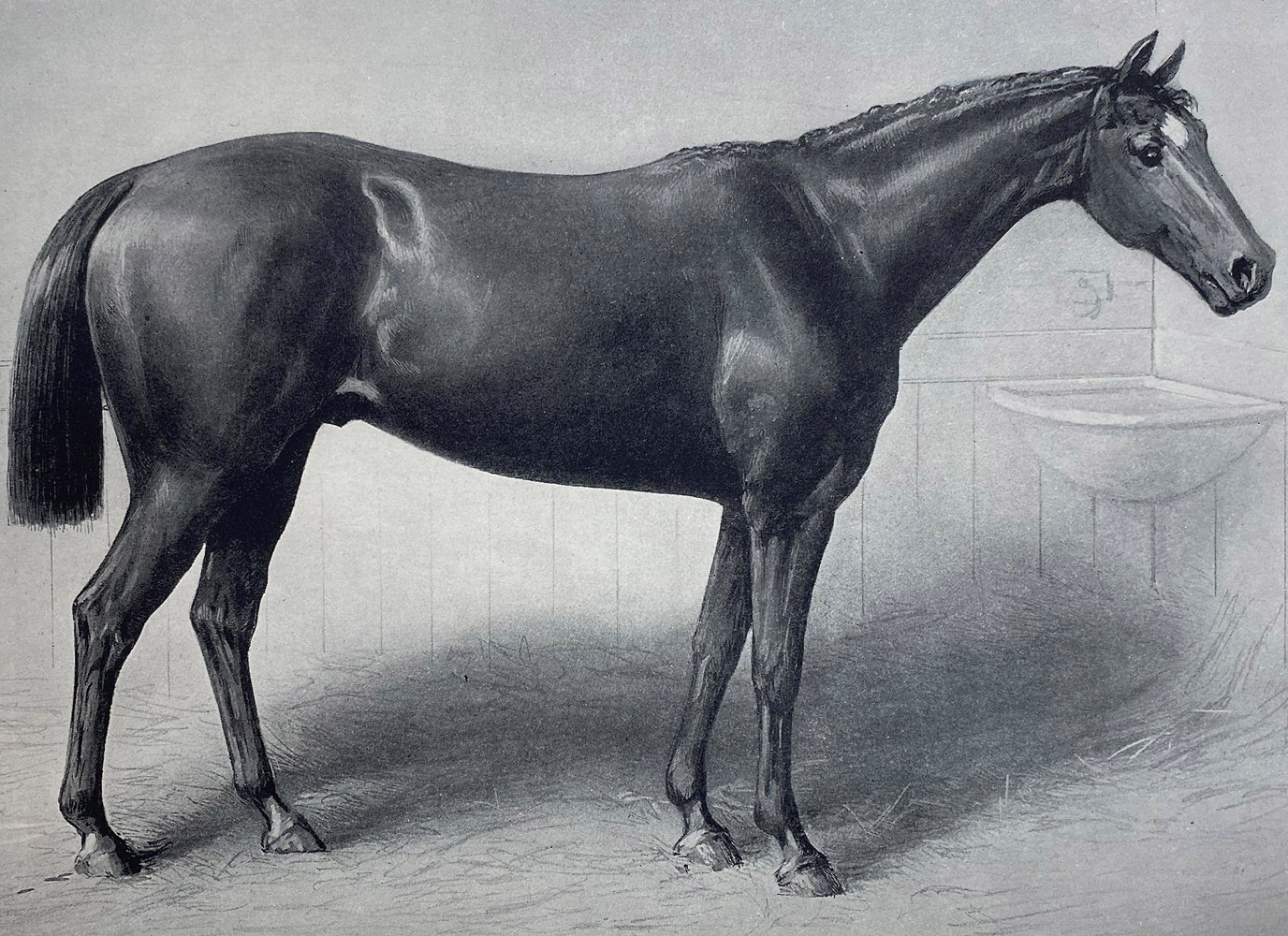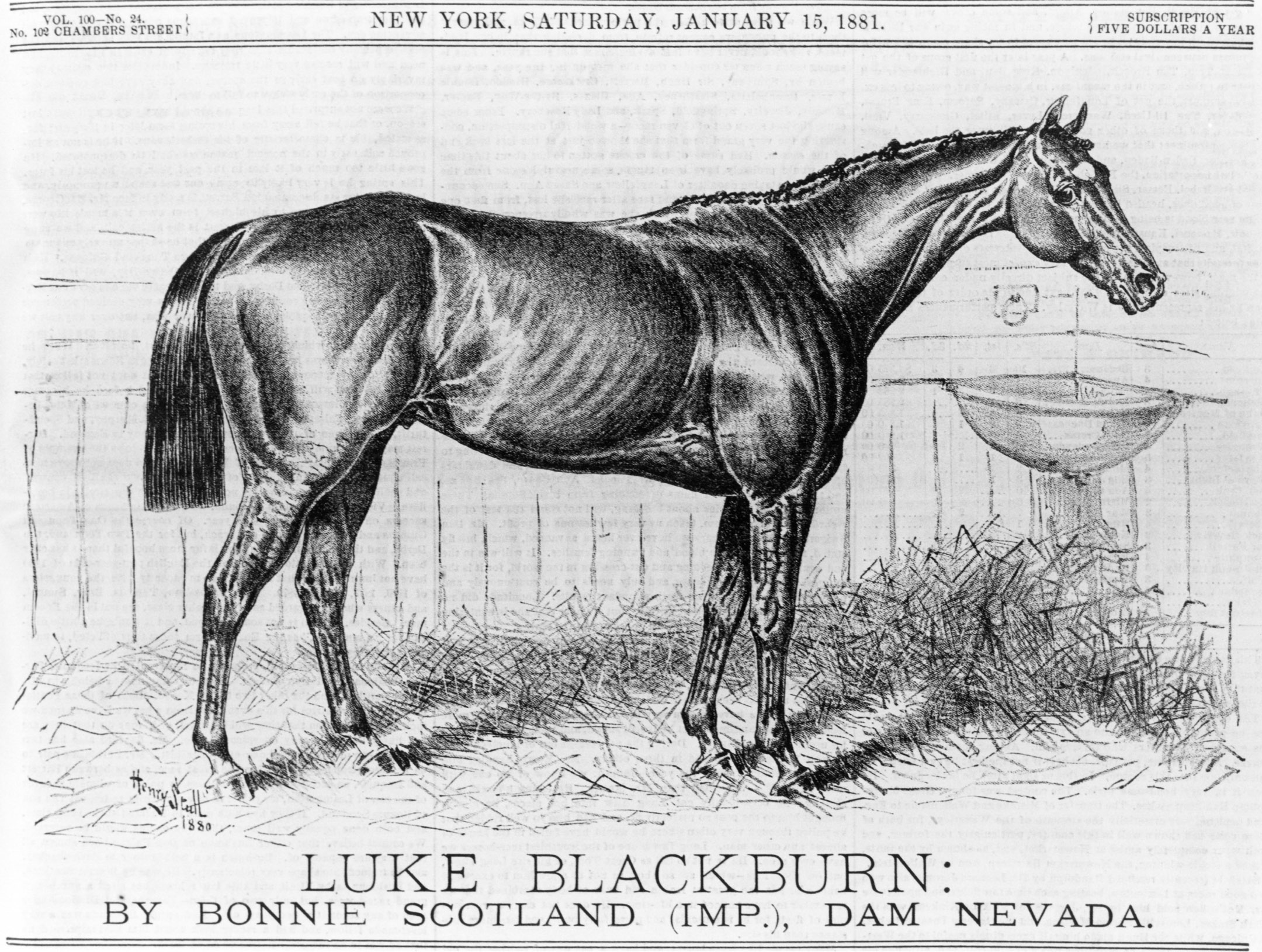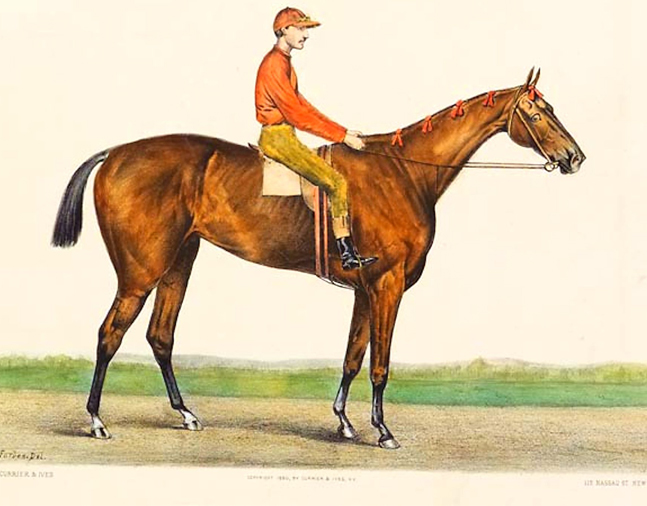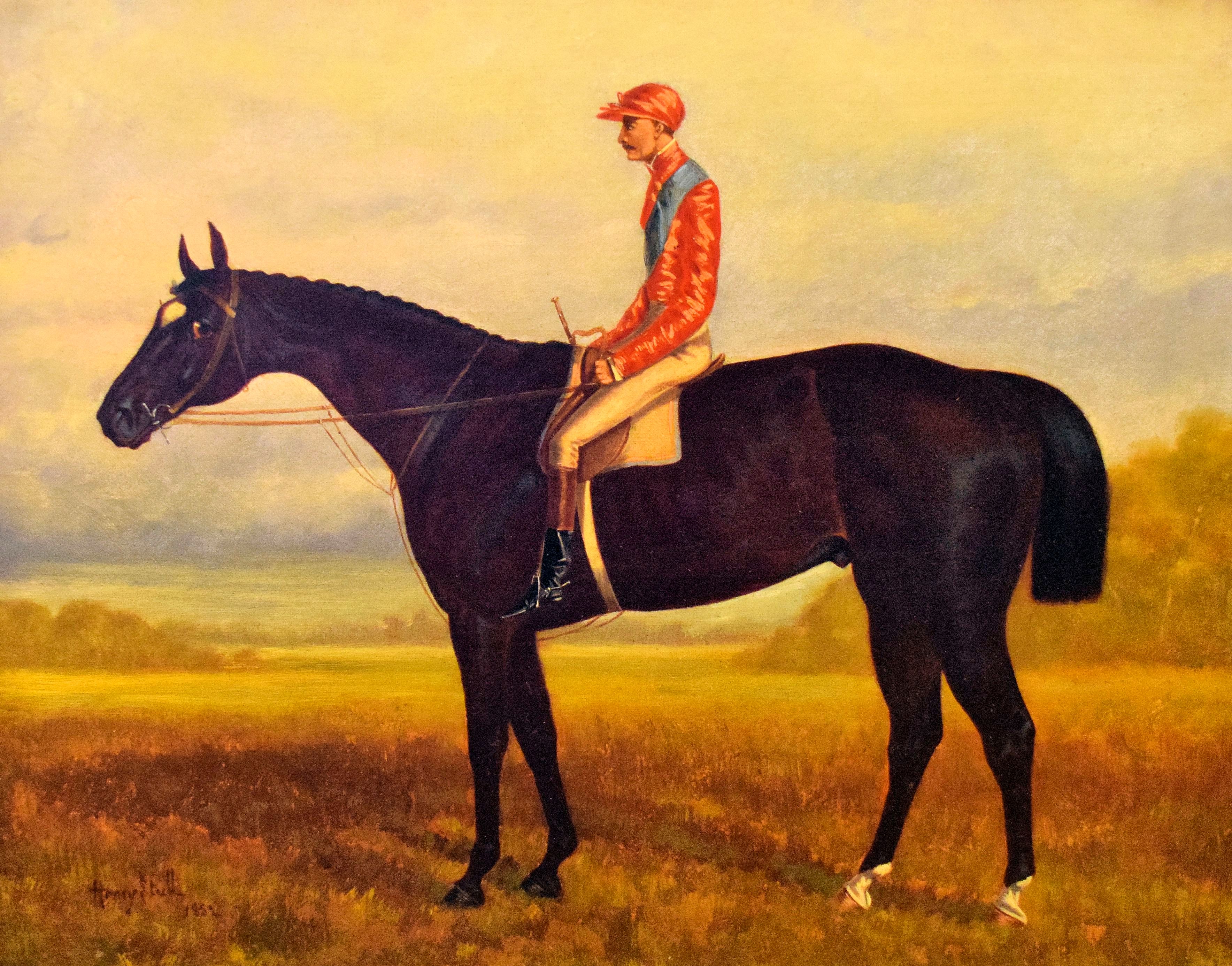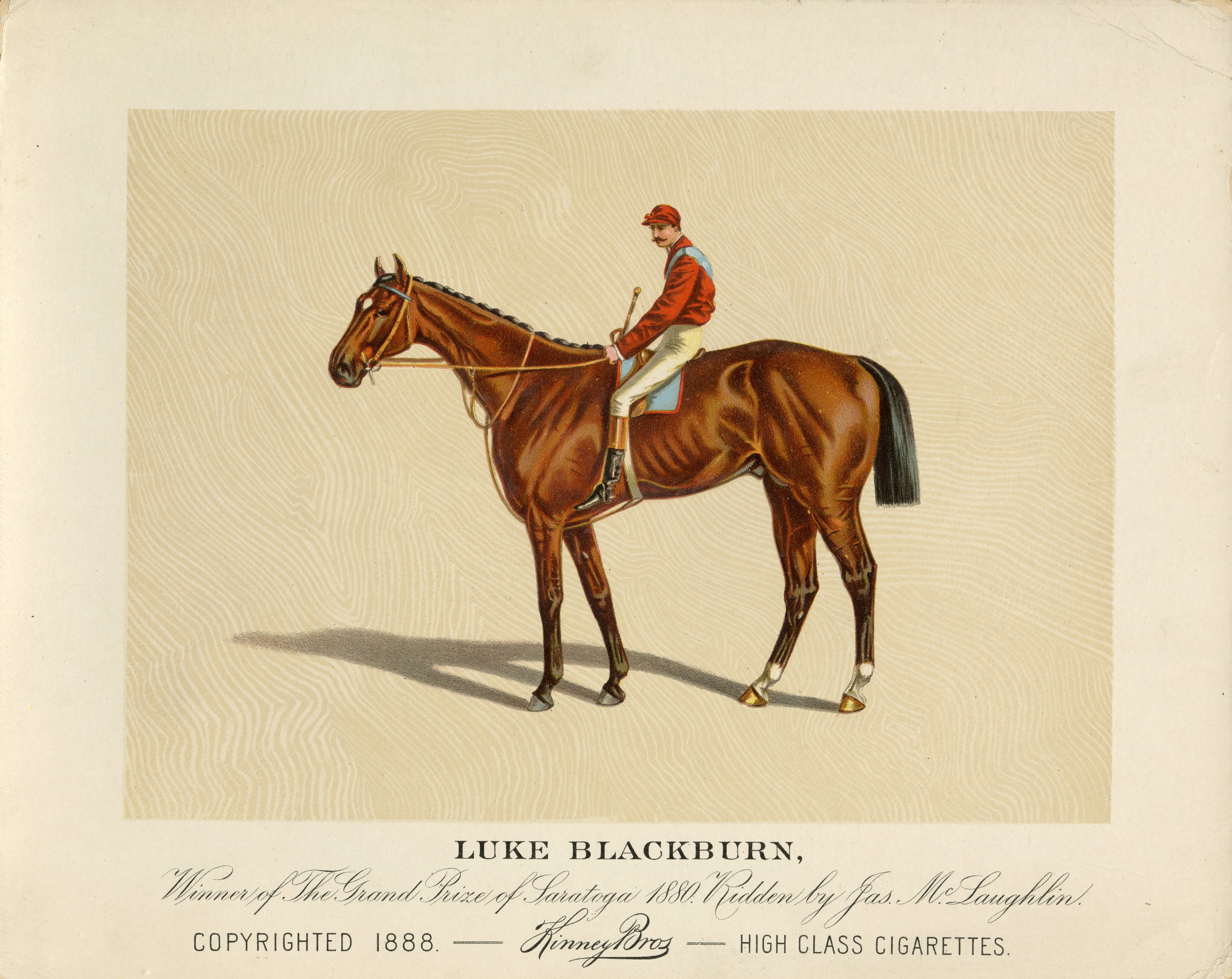Luke Blackburn (TN)
Hall of Fame jockey James McLaughin piloted several of the best racehorses of the 19th century, including Hindoo, Hanover, Kingston, Salvator, Miss Woodford, and Firenze. McLaughlin, however, always considered Luke Blackburn to be the best of his many superstar mounts.

1956
1877
Bonnie Scotland
Nevada
Lexington
Capt. James Franklin
A. C. Franklin
S. L. Wartzfelder
Capt. Jim Williams
Dwyer Bros. Stable
Capt. Jim Williams
James Rowe, Sr.
1879-1881
$49,460
Racing Record
39
Starts
| 1879 | 13 | 2 | 6 | 1 | $1985 $1,985 |
| 1880 | 24 | 22 | 0 | 1 | $46975 $46,975 |
| 1881 | 2 | 1 | 0 | 0 | $500 $500 |
Biography
Hall of Fame jockey James McLaughin piloted several of the best racehorses of the 19th century, including Hindoo, Hanover, Kingston, Salvator, Miss Woodford, and Firenze. McLaughlin, however, always considered Luke Blackburn to be the best of his many superstar mounts.
Bred at Kennesaw Stud near Gallatin, Tennessee, by Capt. James Franklin and A. C. Franklin, Luke Blackburn was a bay son of Bonnie Scotland out of the Lexington mare Nevada. Named after Luke P. Blackburn, the governor of Kentucky at the time, the equine Luke Blackburn was purchased as a yearling by Capt. Jim Williams for $510. Williams, who initially served as Luke Blackburn’s trainer, had little success with him as a 2-year-old.
Luke Blackburn did not break his maiden until his 12th start as a juvenile, finally winning a $500 purse by two lengths at Prospect Park. Two weeks later, at Brighton Beach, Luke Blackburn won the Ocean Stakes by eight lengths and was put away for the year with a record of 2-6-1 from 13 starts and modest earnings of $1,985.
The momentum Luke Blackburn built late in 1879 carried into his 3-year-old campaign, which is regarded as one of the finest in the history of American racing. Now racing for Mike and Phil Dwyer, who purchased the colt for $2,500, Luke Blackburn was transferred to trainer James Rowe, Sr. After finishing second in the Phoenix Hotel Stakes to open the 1880 season, Luke Blackburn was given a bit of a breather before embarking on an ambitious schedule.
Beginning on June 3, Luke Blackburn raced seven times in 19 days, winning each time. In the 1⅜-mile Coney Island Handicap, Luke Blackburn won by four lengths in 2:24½, shaving more than a second off Spendthrift’s American record for the distance. The seven-race win streak was snapped when Luke Blackburn stumbled and fell in his next race at Gravesend.
Luke Blackburn dominated the remainder of the campaign, winning 15 consecutive races. His victories included the United States Hotel Stakes (by 10 lengths), the Grand Union Hotel Prize, Kenner Stakes, Champion Stakes (setting an American record for 1½ miles in 2:34), Great Challenge Stakes (defeating top older horses including Monitor, Uncas, and One Dime by 10 lengths), Long Island St. Leger (walkover), Kentucky St. Leger, and Great American Stallion Stakes (by 10 lengths).
An injury in the Great American Stallion Stakes brought Luke Blackburn’s remarkable sophomore season to an end with a record of 22-0-1 from 24 starts and earnings of $46,975. The Dwyers brought him back as a 4-year-old in 1880 and he stretched his win streak to 16 with an eight-length victory at Jerome Park, but two weeks later he was injured again while contesting the Coney Island Cup and limped home fourth. Luke Blackburn was retired with a career mark of 25-6-2 from 39 starts and earnings of $49,460.
The Dwyers sold Luke Blackburn to Gen. W. M. Jackson and he stood in Tennessee at Belle Meade Stud near Nashville. Luke Blackburn had little success as a stallion, siring only three stakes winners. He did sire one notable son in Proctor Knott, winner in the inaugural Futurity over Salvator.
Luke Blackburn died in 1904 at the age of 27.
In describing Luke Blackburn, racing historian Walter S. Vosburgh said: “In action he was like a wild horse, running with his head high in the air, his nostrils flaring, and his eyes ablaze, with McLaughlin sitting far back in the saddle trying to restrain him — indeed he leaned back so far that he often spurred the colt in the brisket, unintentionally. McLaughlin said he never rode a horse so hard to control, nor one whose physical power was so great. Once, McLaughlin said, he stepped on a stone, and, flinching from it, he gave such a bound ‘that he fairly lifted me out of the saddle.’ After beating Glenmore in the Grand Union Hotel Prize, McLaughlin said he was so tired from trying to hold Blackburn that, upon dismounting, he could not walk to the scale. Such a combination of muscular and nervous force has never been seen in any other American race horse.”
Achievements
Horse of the Year — 1880
Champion 3-Year-Old Male — 1880
Media
